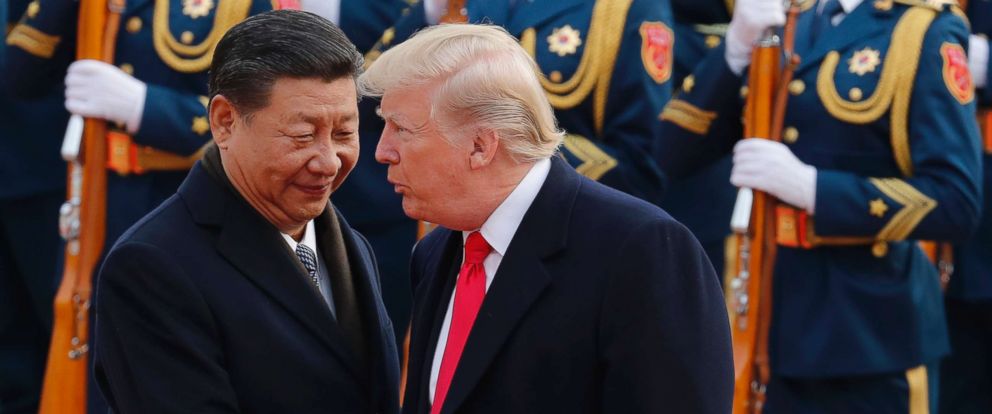[Peter Morici | December 26, 2018 | MarketWatch]
More importantly, however, China’s bilateral trade surplus is at the epicenter of its efforts to achieve parity or surpass the United States as the pre-eminent global superpower.
This contest is waged in four theaters — the Korean Peninsula, the South China Sea and broader Pacific and Indian Oceans, the race for dominance in artificial intelligence, and most importantly, the standoff over trade.
Past U.S. presidents appeased Beijing by letting it enable, effectively unchallenged, North Korea’s nuclear weapons and missile programs. Those now pose a direct threat to the U.S. mainland, and Trump has responded by coordinating tough international sanctions.
Unfortunately, China and Russia have enabled North Korea to circumvent critical elements of those sanctions. That permits North Korean President Kim Jong-un to slow walk the denuclearization that was anticipated by the U.S.-North Korean framework agreement.
Festering American preoccupation with the Korean Peninsula distracts attention from the South China Sea, where Beijing’s forces have taken possession, expanded and militarized islands in international waters, and violated the freedom of navigation and the sovereignty of neighboring states.
China is building a navy to challenge American sea power. That shakes confidence among our Southeast Asian friends, and it has established a naval base on the Horn of Africa and has taken possession of a vital port in Sri Lanka.
With the Belt and Road Initiative, China is financing a network of ports and rail connections stretching from China to Europe and duping developing nations, like Sri Lanka, into debt servitude. Importantly, it seeks an undisputed sphere of influence through island nations stretching from Taiwan to Sri Lanka and the Maldives and on to the Horn of Africa.
All of this takes hundreds of billions of dollars to buy, develop and as necessary illegally appropriate Western technology and hardware ranging from port cranes to fighter aircraft to artificial intelligence enabled hardware and software. It’s substantially financed by China’s elaborate trade and industrial policies designed to foster trade surpluses with the United States.
China closes its markets to competitive U.S. products with high tariffs and administrative barriers. American companies seeking to produce directly in China must hand over technology through joint ventures and by establishing product development labs that employ Chinese engineers.
Firms like Apple AAPL, +1.42% and Google GOOG, +0.90% , if wishes to return to the Middle Kingdom, must recognize Taiwan as a province of China, turn a blind eye to Beijing’s egregious human-rights violations, help enforce China’s Great Fire Wall, and enable technologies, as needed, to build out Beijing’s population-monitoring and social-credit system.
Now Google is balking at assisting the Pentagon with similar facial-recognition technologies.
China is pouring hundreds of billions of dollars into accomplishing dominance in artificial intelligence and supporting computer hardware — a technological ecosystem that will be the analog in this century to what water power and mechanized mills were in the 19th century and electrification and computerization were in the early 20th century.
Mastery of those technologies established British and then American industrial dominance and provided the wealth for strong armies and navies. Now Beijing is outspending America, outthinking the bureaucracy in Washington, and exploiting American apathy.
Recent polls show Americans don’t see China as a threat. Yet, trade is the linchpin of China’s strategy. Without the $360 billion bilateral trade surplus, China simply would not have the cash to finance all these adventures.
Beijing can’t print yuan USDCNY, -0.0014% by borrowing such sums because even its own citizens don’t want to hold yuan-denominated assets. Once they have made their money they want to invest in the West, making capital controls essential to the stability of China’s fragile financial system and the international value of its currency.
Even with the best of intentions, conforming China’s centrally directed capitalism to Western norms of free-market behavior, as was incorrectly presumed would evolve when it was admitted to the World Trade Organization, would require dramatic cultural changes among its state-owned enterprises and within the Communist Party.
However difficult, those are made practically impossible by the central role that trade surpluses play in financing China’s broader geopolitical ambitions.













